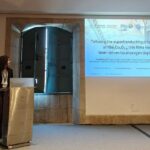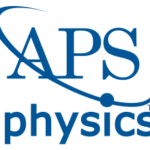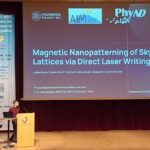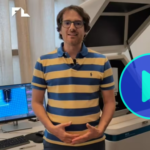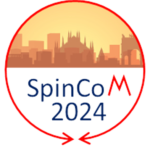Welcome
Welcome to the webpage of PhyND research group!
We are part of the Department of Physics of Politecnico di Milano, and we are located at PoliFab, the micro-nanofabrication center of PoliMi.
We develop and use advanced methodologies for tailoring the physical properties of condensed matter systems, with precision down to the nanoscopic scale.
Our research aims to realize and study new artificial nanostructured materials and devices where to harness complex phenomena and give rise to enhanced functionalities.
News & Highlights
- Valerio Levati graduated!PhD defense done! 🎓 Valerio Levati is officially a PhD in Physics! 👨🎓📜 Thesis: Phase Nanoengineering via Direct Laser Writing for Functional Oxide Thin Films. Congrats Valerio!!🥳🎉
- Mini-workshop on Quantum & Magnetic Materials NanostructuresWe hosted a mini-workshop on Quantum & Magnetic Materials Nanostructures ! 🔬💡 We were delighted to hear from Amalio Fernández-Pacheco (TU Wien) 🧲 and Anna Palau (ICMAB-CSIC, Barcelona) 🔬.
- Irene gave a talk AT EUCAS 2025 in PortoLast week Irene gave a talk at the European Conference on Applied Superconductivity (EUCAS 2025) in Porto. Congrats Irene!! 🤩🤩👏👏
- Daniela gave a Semi Plenary talk at JEMS 2025Daniela gave a Semi Plenary talk entitled “3D magnonics: controlling and visualizing spin waves with three-dimensional resolution” at the Joint European Magnetic Symposia (JEMS2025) in Frankfurt. 🤩🤩🧲🌊
- Invited Talks by Edoardo at ICSM 2025Edoardo gave two talks about the PhyND activities entitled “Tunable nanoscale control of magnetism via phase nanoengineering” and “Controlling and imaging spin waves in 3D” at ICSM2025, Turkey
- Invited talks at the APS Global Physics Summit and IPCMSEdoardo gave two invited talks on “Three-dimensional control and imaging of spin waves in nanostructured thin films” at the APS Global Physics Summit 2025 and IPCMS Strasbourg 🧲🌊🚀
- New talks and posters by the PhyND group!PhyND group talked at AIM25, MMM25/Intermag, AIMagn colloquia and Nanofrazor Webinar about phase nanoengineering, three-dimensional magnonics and applications! 🤩🙌
- Congrats Berna and DennisBerna Esmer and Dennis Sessolo successfully carried out their master thesis defense, congrats Berna and Dennis!! And best wishes on your future adventures! 🎉 👏🎉 👏
- Davide Girardi graduated cum laude!The past September 11th Davide successfully defended his Ph.D. thesis ““Tailored nanoscale spin textures for spintronics and three-dimensional magnonics” and graduated cum laude. Big congrats Davide!! 🎉 👏
- Daniela gave an invited talk at ICMFS2024!Daniela Petti gave an invited talk entitled “Three-dimensional spin-wave dynamics, localization and interference in a synthetic antiferromagnet” at the 25th International Colloquium on Magnetic Films and Surfaces held in Perugia
- Valerio won the best poster award at ICM2024!Valerio Levati won the best poster award at the 22nd International Conference on Magnetism (ICM2024). Big congrats to Valerio and team!! 👏👏🧲🧲
- PhyND lab featured on Fondazione Leonardo’s “Social Labs”Edoardo explained the activity of PhyND lab in a video-interview for Fondazione Leonardo! “Nanotecnologie, come creare nuovi materiali manipolando gli atomi con la luce ed il calore”
- SpinCom2024 WorkshopSpinCom2024, a satellite event of ICM 2024 held place in Milano on Friday, June 28th. The workshop brought together scientists at the forefront of magnetism and spintronics, focusing on the exciting challenges of computing and signal processing. Thanks everyone for attending!!
Research activities
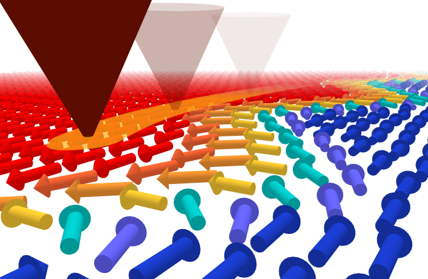
Tools for controlling physics at the nanoscale are crucial for the development of new paradigms in optics, electronics and spintronics. We develop advanced techniques based on thermal scanning probe lithography (t-SPL) and direct laser writing, for crafting the physical properties of materials via physical, structural or chemical modifications.
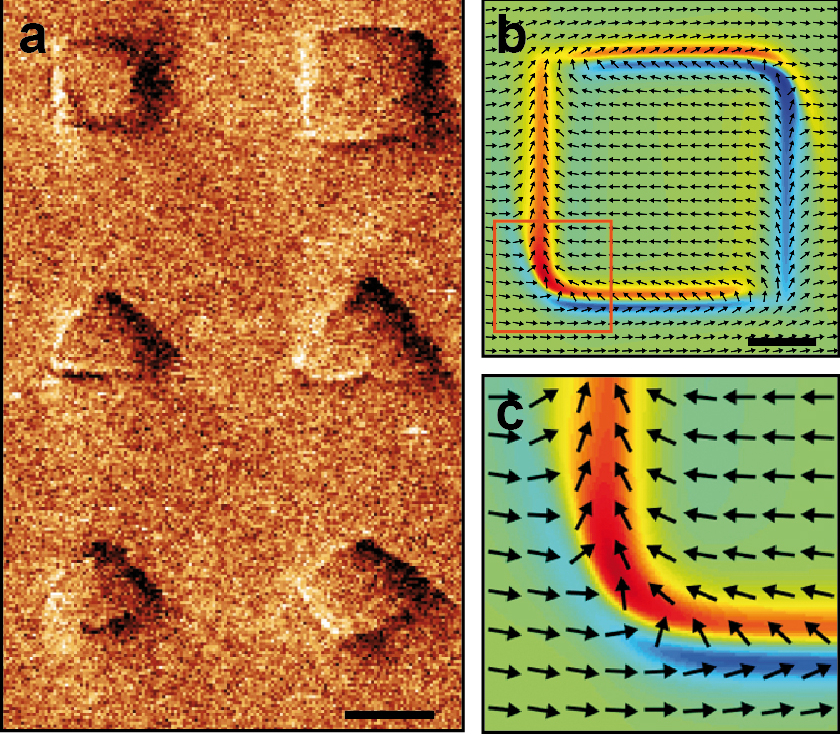
We develop and use thermally assisted magnetic nanopatterning and laser lithography, in combination with nanolithography, for patterning multidimensional spin-textures in magnetic multilayers, such as domains, domain walls and topological solitons. Then, we use such spin textures for controlling and study the emission and propagation of spin waves in magnetic thin films. We study the three-dimensional propagation of spin waves in multilayers
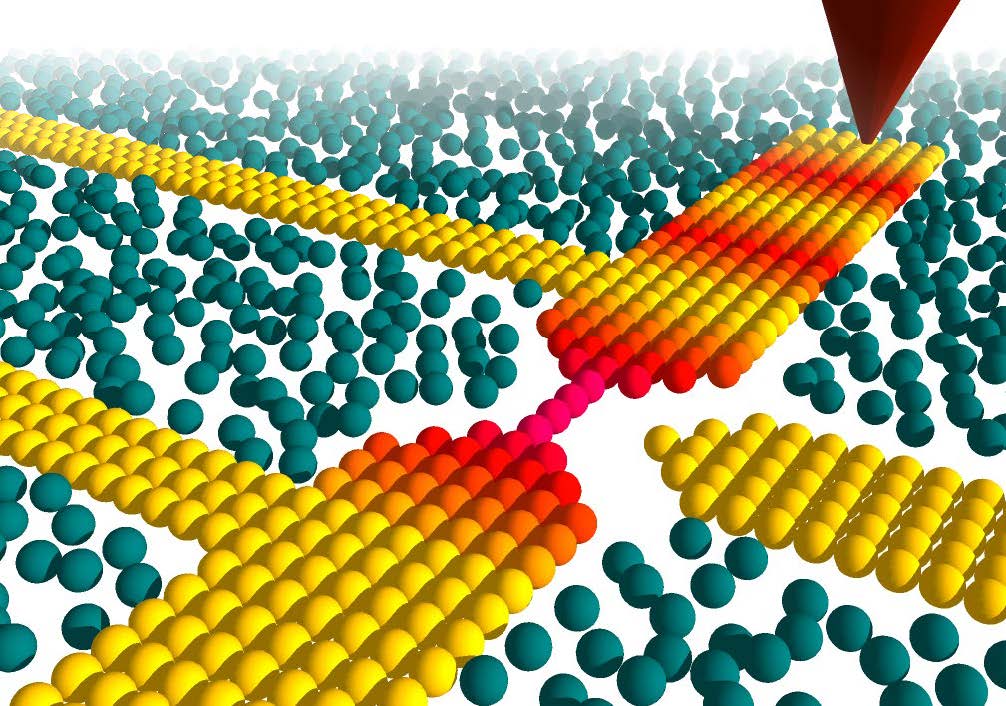
We control at the nanoscale the electronic and spin transport properties of thin-films in phase-change materials and complex oxides, and develop new artificial nanomaterials and devices with engineered electronic transport properties, arising from the proximity and coexistence of different structural and electronic phases.
Publications Highlights
Here you find a list of highlighted recent publications. Links to the full list of our publications on scientific journals, book contributions, patents and the cover page gallery.
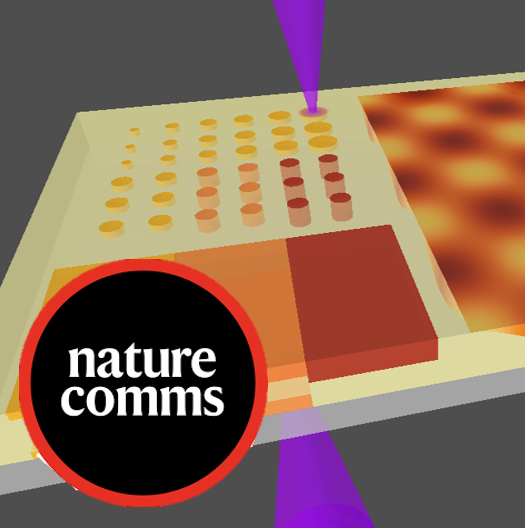
Three-dimensional nanoscale control of magnetism in crystalline Yttrium Iron Garnet
V. Levati, M. Vitali et al. Nature Communications (2025).
We demonstrate a non-destructive method for writing three-dimensional magnetic patterns in crystalline Yttrium Iron Garnet (YIG) films using focused UV laser irradiation to locally enhance perpendicular magnetic anisotropy. This technique enables the precise fabrication of 3D magnonic crystals with tunable spin-wave properties, paving the way for advanced architectures in magnonic and magneto-optic devices.
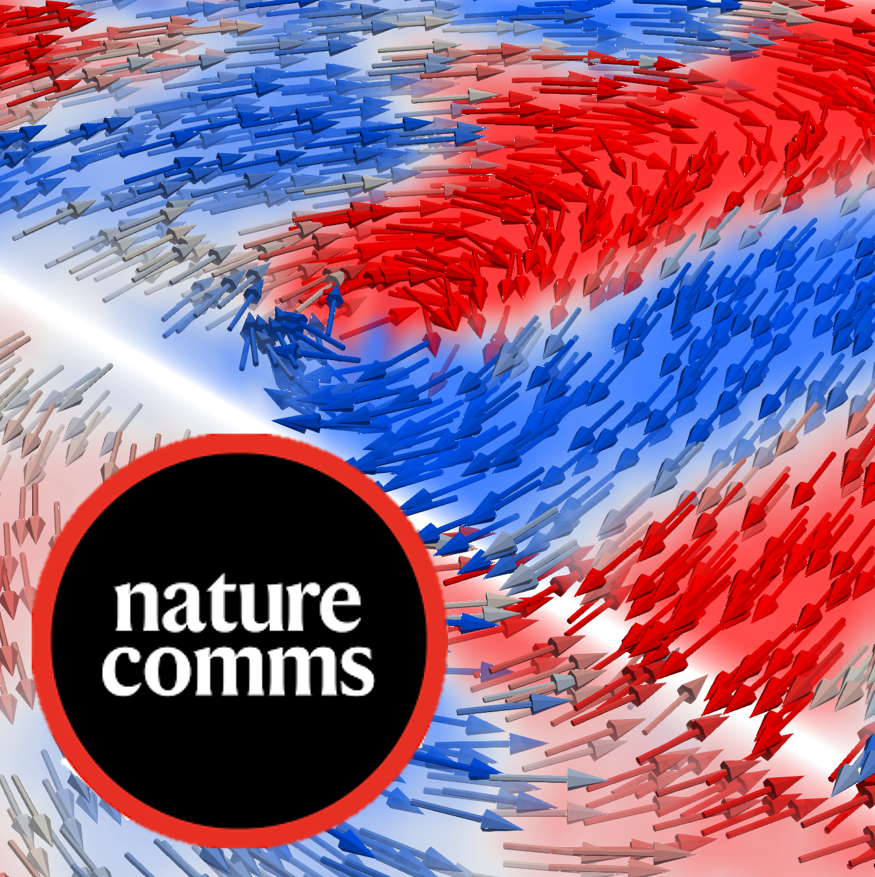
Three-dimensional spin-wave dynamics, localization and interference in a synthetic antiferromagnet
D. Girardi et al. Nature Communications (2024).
We use X-Ray Microscopy Imaging for acquiring time-resolved snapshots of the spin dynamics in a synthetic antiferromagnet, with nanoscale spatial resolution and sub-nanosecond temporal resolution. This allowedus to retrieve the full three-dimensional structure of the spin-wave modes, revealing previously inaccessible features on their anatomy, propagation and interaction within the volume of the material.

Phase Nanoengineering via Thermal Scanning Probe Lithography and Direct Laser Writing
V. Levati et al. Advanced Materials Technologies (2023).
A perspective on Phase Nanoengineering. Nanomaterials and devices are created using advanced nanofabrication techniques to directly nanostructure condensed matter systems, by inducing highly controlled, localized, and stable changes in the electronic, magnetic, or optical properties.
Experimental Observation of Flat Bands in One-Dimensional Chiral Magnonic Crystals
S. Tacchi et al. Nano Letters (2023).
We study the band diagram of a chiral magnonic crystal consisting of a ferromagnetic film incorporating a periodic Dzyaloshinskii–Moriya coupling via interfacial contact with an array of heavy-metal nanowires. We provide experimental evidence for a strong asymmetry of the spin-wave amplitude and nonreciprocal propagation.

Thermal scanning probe lithography
E. Albisetti et al. Nature Reviews Methods Primers 2, 32 (2022).
We describe the working principles of Thermal scanning probe lithography (tSPL) and highlight the characteristics that make it a powerful tool to locally and directly modify material properties. We cover the applications of tSPL in biomedicine, nanomagnetism and nanoelectronics, and give an outlook on future developments.

Review on magnonics with engineered spin textures
D. Petti et al. Journal of Physics D: Applied Physics, 55, 293003 (2022).
Spin textures, such as non-uniform domain arrangements, domain walls and skyrmions are naturally occurring structures in magnetic materials. In this review, we focus on the recent developments on the control and stabilization of engineered spin textures, and their applications in the field of magnonics.

The 2021 Magnonics Roadmap
A. Barman et al. Journal of Physics: Condensed Matter, 33, 413001 (2021).
Magnonics is a budding research field in nanomagnetism and nanoscience that addresses the use of spin waves (magnons) to transmit, store, and process information. This is a collection of 22 sections written by leading experts in this field who review and discuss the current status besides presenting their vision of future perspectives.

Optically Inspired Nanomagnonics with Nonreciprocal Spin Waves in Synthetic Antiferromagnets
E. Albisetti et al. Advanced Materials, 32, 1906439 (2020).
An optically inspired platform using spin waves is realized, demonstrating the wavefront engineering, focusing, and robust interference of spin waves with nanoscale wavelength. Magnonic nanoantennas based on spin textures are used for launching spatially shaped coherent wavefronts, and generating robust multi-beam interference patterns.

Spatial defects nanoengineering for bipolar conductivity in MoS2
X. Zheng et al. Nature Communications, 11, 1–12 (2020).
We demonstrate the integration of thermochemical scanning probe lithography (tc-SPL) with a flow-through reactive gas cell to achieve nanoscale control of defects in monolayer MoS2. The tc-SPL produced defects can present either p- or n-type doping on demand, allowing the realization of field effect transistors, and p-n junctions

Direct metal contacts on MoS2 with vanishing Schottky barrier via thermal nanolithography
X. Zheng et al. Nature Electronics, 2, 17–25 (2019).
We show that thermal scanning probe lithography can be used to pattern metal electrodes with high reproducibility, sub-10-nm resolution, and high throughput (105 μm2 h−1 per single probe). We pattern metal electrodes in contact with monolayer MoS2 realizing high-quality top-gate and back-gate field-effect transistors.

Nanoscale spin-wave circuits based on engineered reconfigurable spin-textures
E. Albisetti et al. Communications Physics, 1, 56 (2018).
We realize a nanoscale reconfigurable spin-wave circuitry by using patterned spin textures. We directly visualize the channeling and steering of propagating spin waves in arbitrarily shaped nanomagnonic waveguides and we demonstrate a prototypic circuit allowing for the tunable interference of confined spin-waves modes.

Stabilization and control of topological magnetic solitons via magnetic nanopatterning of exchange bias systems
E. Albisetti et al. Applied Physics Letters 113,162401 (2018).
We show the non-volatile creation of vortex-antivortex pairs in an exchange bias bilayer by tailoring vectorially the unidirectional anisotropy at the nanoscale, via thermally assisted magnetic scanning probe lithography. We demonstrate the stabilization of cross and circular Bloch lines within patterned Néel magnetic domain walls.

Nanopatterning reconfigurable magnetic landscapes via thermally assisted scanning probe lithography
E. Albisetti et al. Nature Nanotechnology, 11 (6), 545–551 (2016).
We create reconfigurable magnetic nanopatterns by crafting, at the nanoscale, the magnetic anisotropy landscape of an exchange-biased ferromagnetic film. By scanning the hot tip of a scanning probe microscope, spin textures are directly and reversibly patterned, and used for controlling the excitation and propagation of spin waves.

Thermochemical scanning probe lithography of protein gradients at the nanoscale
E. Albisetti et al. Nanotechnology, 27, 315302 (2016).
We demonstrate the use of thermochemical scanning probe lithography (tc-SPL) for defining micro- and nano-sized patterns with precisely controlled protein concentration. First, tc-SPL is performed by scanning a hot atomic force microscopy tip on a polymeric substrate, then the substrate is functionalized with streptavidin and laminin proteins.
Projects & Funding
Our research received funding from the following agencies and programmes. Our laboratories receive funding by the European Research Council through ERC Stg Grant number 948225, Project B3YOND. Take a look to our active and past projects.
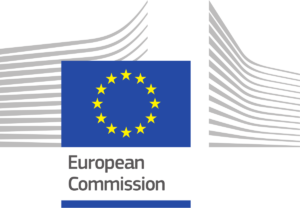
H2020 Programme
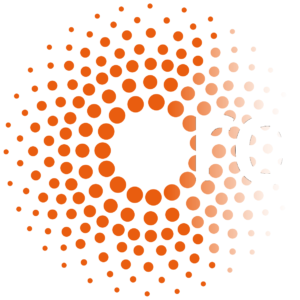
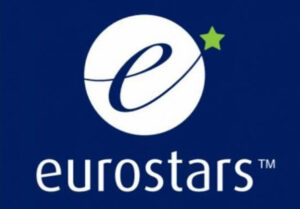
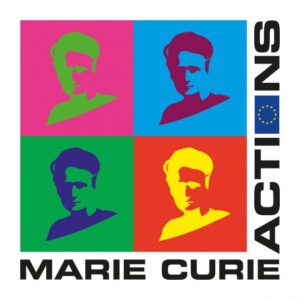


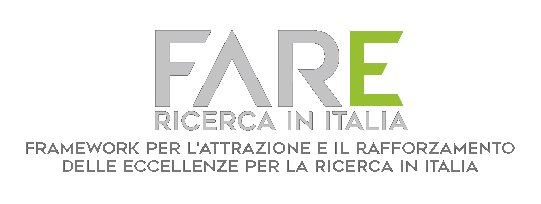
Programme

